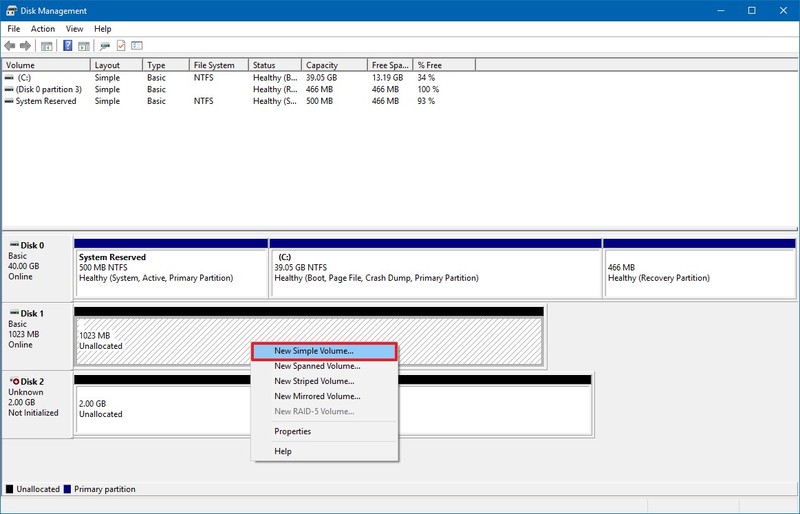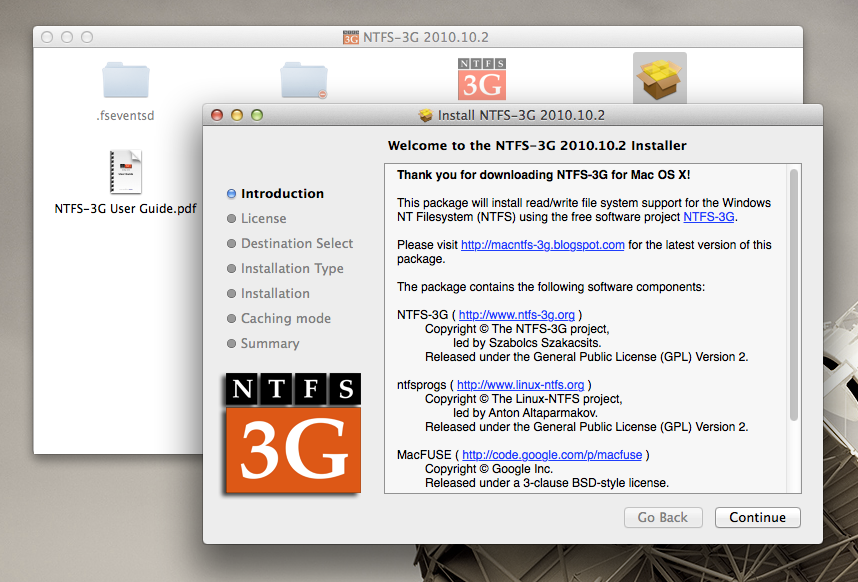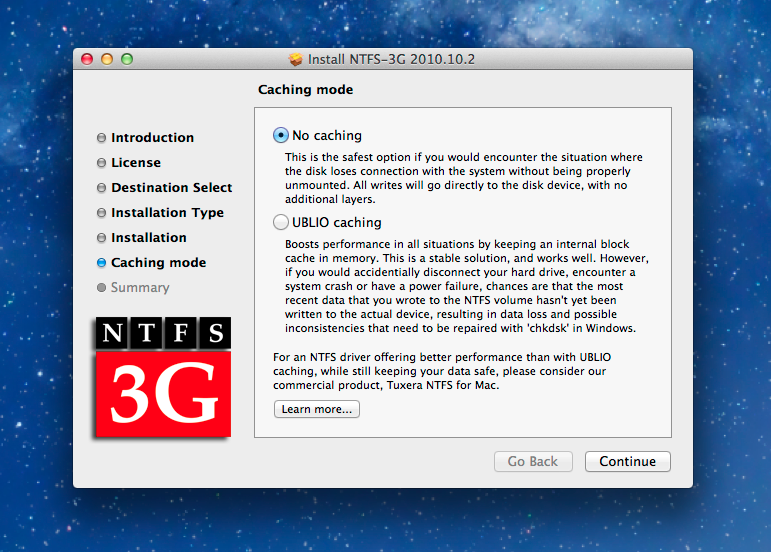

NTFS 3G YOSEMITE HOW TO
Look at this tutorial to see how to disable Rootless in Mac OS X 10.11 El Capitan. Use the latest build of OSXfuse (3.1.0 or higher) to avoid System integrity Protection issues.(Otherwise on OSXfuse 2.8.3? If using El Capitan, System Integrity Protection’s fs role will first need to be disabled.).
NTFS 3G YOSEMITE FOR MAC
If the above does not work on your new MacOS Sierra, this topic would help.įor saving a ton of time, I personally recommend Paragon NTFS For Mac 15, which is is the best NTFS Driver for Mac. It support fully MacOS Sierra, El Capitan, Yosemite, Mavericks, and older OS X versions.

NTFS 3G YOSEMITE WINDOWS
NTFS 3G YOSEMITE FULL
Providing full read&write access to Windows NTFS partitions under Mac® OS X.Excellent solution for end users, SOHO and the Enterprise.Īfter a few seconds for installation, users are able to write to any NTFS drives on Mac with the transfer rate is the same as with the native HFS file system.

Unless you host a lot of piggy files on a partition, the typical user will have mostly SMALL files assuming one file per sector, why should a 250-byte file wallow in a 2 kilobyte sector? As part of the pre-plan, format your NTFS partitions using 512-byte sectors - and stop wasting space. Okay - why the gnashing of teeth? Easily explained up to that same partition size, NTFS has a 512-byte sector option that is perfectly fine for BIOS-based PCs to use. Up to the BIOS default for partition sizes - two terabytes - NTFS defaults to 2 kilobytes per sector. With that said, I have one quibble with NTFS - the default bytes per sector. The lack of ability to become deranged by either HFS-J or Linux merely reading NTFS (writing to NTFS is, naturally, a different story - that is why I generally leave NTFS-write disabled) is why I prefer NTFS as a source partition, even for files that Windows has zero use for (such as OS X or Linux-targeting datafiles, etc.) Even better, NTFS is like type O (the Universal Donor) - both OS X and Linux distributions can read it by default. Mounting a disk image doesn't change the underlying filesystem hosting the file it makes it easier for the gaining filesystem to handle the contents, but that's all. What I DON'T get is why this is still surprising. One thing that STILL surprises folks is being able to mount an image file from a foreign file system - specifically, things like DMG files stored on NTFS. Mount an image file from an FFS - Why Not?

If read-only access is enough, NTFS is the least-derangeable by other OSes accessing it (that is why I tend to use NTFS as my overall *host* FS - stability). That said, OS X has the greatest "default" FFS support (read-only for NTFS, and, of course, read/write for all previous flavors of OS X) - however, if you are willing to recompile the kernel (not as difficult as you would think), Linux can beat it (there's a HOWTO hosted on on kernel recompiling for file-system support that is actually newbie-friendly). I'm someone that runs multiple OSes with multiple file-systems on a daily basis - NTFS (two flavors), ext4 (Linux distributions) and HFS-J (OS X Yosemite)(HFS-J is HFS with Journaling - Yosemite's default). If you properly plan, READ access is typically enough. Generally (NAS or not), the only reason that anyone would need WRITE access to a Foreign File System (FFS) is poor partition planning. If it is a network share, it is irrelevant how it drive is formatted as long as the host os can read it and can write to it. The file system only pertains to the os directly attaching to it.


 0 kommentar(er)
0 kommentar(er)
